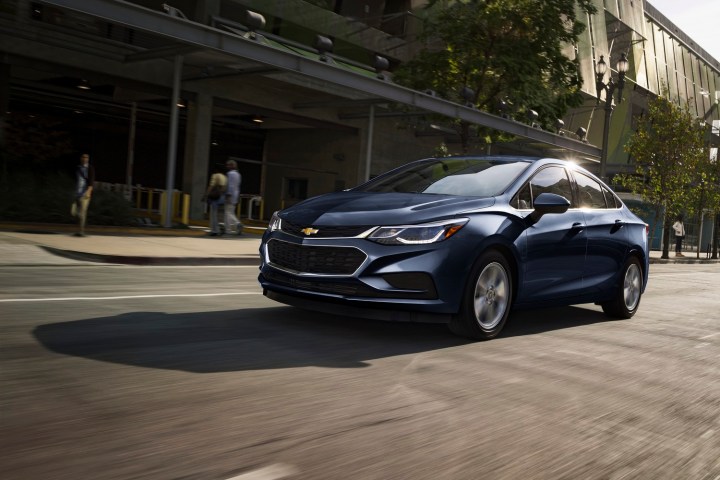
Chevrolet sincerely hopes drivers will pick its Cruze Diesel as their road-trip chariot of choice. So it teamed up with Roadtrippers.com to show off the new diesel compact’s capabilities by showing all of the places drivers can go within the Cruze’s estimated range of 702 miles per tank of diesel.
That’s enough to drive from New York City to Detroit, although Chevy calculated that maximum-range figure using the Cruze’s EPA-rated highway fuel economy of 52 mpg, and the car’s 13.5-gallon fuel tank. In mixed driving, as the saying goes, your mileage may vary. The 52-mpg highway rating also only applies to Cruze Diesels with the six-speed manual transmission; cars with the nine-speed automatic are rated at 47 mpg highway.
The other relevant numbers are 31 and 30 mpg city for the automatic and manual, respectively. The Cruze Diesel is rated at 37 mpg combined with both transmissions. Those are pretty good numbers for a compact car today, but Chevy may have to work to win over buyers suspicious of diesel in the wake of the Volkswagen emissions scandal. That doesn’t seem to concern parent GM too much, as it already sells diesel versions of the Chevy Colorado and GMC Canyon trucks, and will launch diesel options for the Chevy Equinox and GMC Terrain SUVs later this year.
Roadtrippers.com curates road trips for users, showing everything from museums and nature spots to restaurants and hotels along a given route. It also has preplanned itineraries based around themes like history, scenery, and even movie filming locations. It’s a handy tool no matter what you are driving.
It’s also necessary when the car you are driving will be likely be able to keep going a lot longer than you. We personally don’t know anyone who can hold their bladder through 700 straight miles of driving.
Editors' Recommendations
- Some Ryzen CPUs are burning up. Here’s what you can do to save yours
- Apple has some ideas on how to spend your time in lockdown


